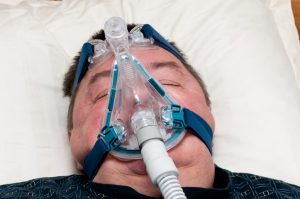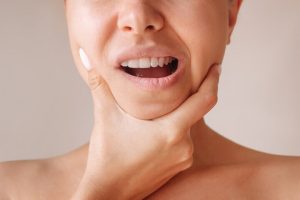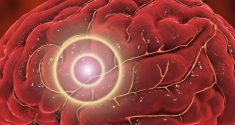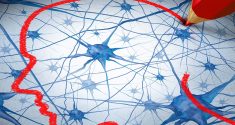A patient falls asleep in the dentist’s chair despite the fear of an upcoming procedure. A seemingly unremarkable act, but for dentists familiar with the latest sleep research, this is an indication of a life-threatening condition. In a research report published in the Journal of the American Dental Association, researchers from Rutgers Health have identified dentists as unexpected players in the fight against life-threatening sleep disorders.
The study shows that dentists have unique opportunities to screen for conditions such as obstructive sleep apnea, a condition that affects millions of people and is associated with serious health risks, including cardiovascular disease and neurodegeneration. The study also urges dentists to look beyond teeth and gums to the health of their patients.
How the Dentist Can Help Recognize Signs of Dangerous Sleep Disorders
Dentists can be the first line of defense in detecting sleep disorders, according to Davis Thomas, clinical associate professor at Rutgers School of Dental Medicine and lead author of the study. They often recognize symptoms long before doctors do. Signs such as teeth grinding, tongue rolling or even a patient falling asleep in the dental chair can be early indicators that something more is at play. Many cases of obstructive sleep apnea go undiagnosed, but dentists can play an important role in reducing this number. The report cites several key indicators that dentists should look for during the exam, including enlarged jaw muscles, hollowed tongue edges, white lines on the cheeks, limited visibility of the throat, wear patterns on the teeth and tiny cracks on the teeth.
 These physical signs, in conjunction with patient history and simple screening tools, can help dentists identify at-risk patients with up to 80 percent accuracy. Another worrying sign, according to the authors of the study, is bruxism, commonly known as teeth grinding. Contrary to long-held assumptions, the studies suggest that teeth grinding is often a symptom of underlying sleep problems, rather than a separate problem caused by misaligned teeth.
These physical signs, in conjunction with patient history and simple screening tools, can help dentists identify at-risk patients with up to 80 percent accuracy. Another worrying sign, according to the authors of the study, is bruxism, commonly known as teeth grinding. Contrary to long-held assumptions, the studies suggest that teeth grinding is often a symptom of underlying sleep problems, rather than a separate problem caused by misaligned teeth.
By understanding the neuroscientific basis of sleep disorders, Thomas says it is possible to offer more comprehensive treatment and potentially prevent serious health complications. This change in perspective could have far-reaching implications. By identifying patients at risk for sleep disorders, dentists can provide early intervention, potentially preventing complications such as high blood pressure, heart disease and strokes.
To implement these findings, Thomas and his team propose a simple protocol for dental practices: Include sleep-related questions in medical history forms. Other recommendations include training dental staff to recognize physical signs of sleep disorders and using validated screening tools such as the STOP-BANG questionnaire (snoring, fatigue, observed apnea, blood pressure, body mass index, age, neck circumference, gender), which screens for obstructive sleep apnea, as well as establishing referral networks with sleep physicians. Thomas recommends that dentists who want to introduce sleep screening into their practice start with further training.
Sleep Bruxism Can Damage Temporomandibular Joints
Previous research has already shown how dangerous night-time teeth grinding and clenching of the upper and lower jaw is. In fact, sleep bruxism can have a number of health consequences. The question of whether sleep bruxism is linked to the development or progression of temporomandibular joint disorders is controversial in dental science. A study at the University Clinic for Dentistry at the Medical University of Vienna found that certain tooth shapes and positions can certainly lead to TMJ problems as a result of bruxism.
Around 15% of the population grind their teeth during sleep. The problem is particularly common in younger people. The often immense pressure exerted on the tooth surfaces and jaw is thought to cause various dental health problems and can also lead to pain in the jaw muscles and headaches. Researchers led by Benedikt Sagl at the Department of Dentistry at the Medical University of Vienna have investigated whether bruxism during sleep can also have a negative effect on the temporomandibular joint structures. Their research is based on the theory that certain combinations of tooth shape and position during grinding have an influence on the mechanical stress on the temporomandibular joint and can therefore be considered a risk factor for TMJ disorders.
Inclination Angle and Position of the Teeth

The study simulated the effects of lateral grinding on the first molar and canine with six different inclinations of the wear facet, resulting in a total of twelve simulated scenarios. According to the researchers, the results show that both the inclination and the position of the wear facets have an influence on the strength of the mechanical load on the temporomandibular joint. However, the steepness of the grinding facet appears to be decisive. The flatter the tooth, the higher the load on the joint and thus the risk of TMJ disorder, whereas if the tooth cusps involved in bruxism have a steeper angle of inclination, the calculated joint load was lower even with the same “grinding force” (bruxing force). Further research and clinical studies will now clarify whether these findings can be incorporated into the development of therapeutic measures against sleep bruxism.







